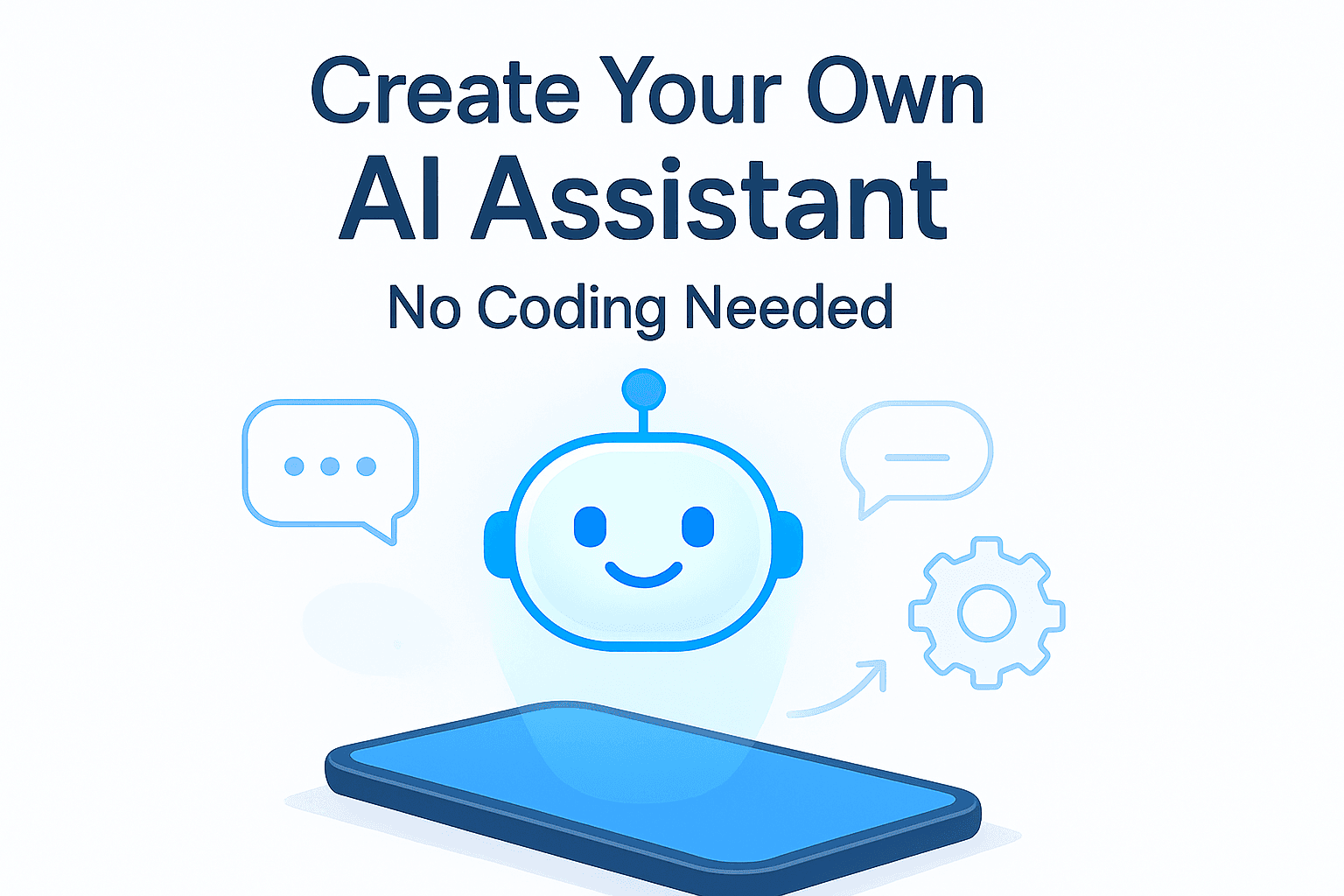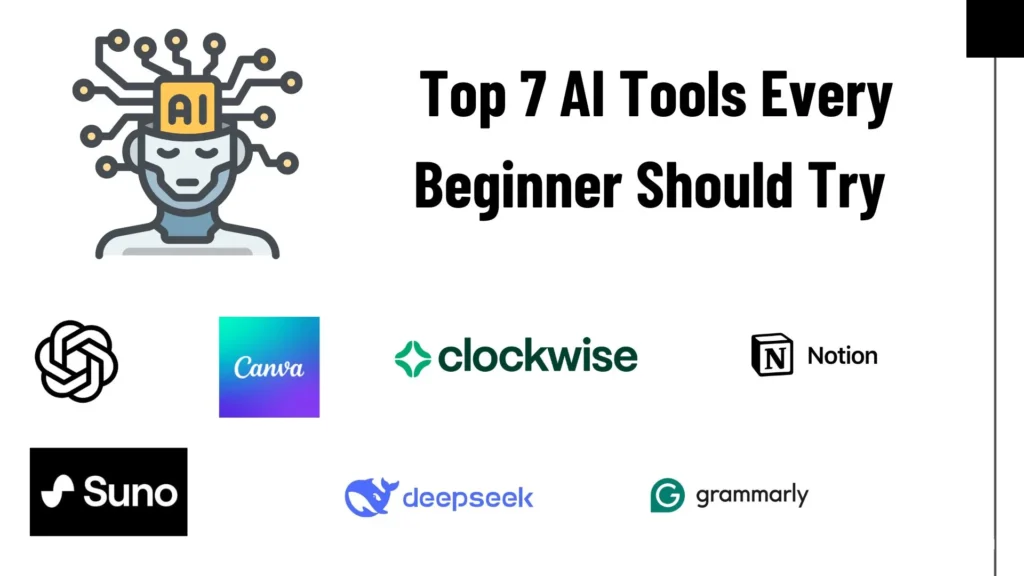
What if I could have my own AI assistant, one that schedules your day, answers questions, sends emails, and even reminds you to drink water, without writing a single line of code?
I have such an AI assistant, & you can also create without any coding knowledge. Now, AI is no longer a part of tech labs; it’s now mainstream, affecting our lives in a better way. AI can assist you with anything you want as a companion.
In this article, I’ll be guiding you to create your personal AI assistant. Whether you’re a student trying to stay organized, a content creator juggling multiple tasks, or just someone who wants to automate the boring stuff, this guide will show you exactly how to create your own AI assistant without writing a single line of code.
Also Read: Future Of AI
Why Build A Personal AI Assistant
In today’s fast-paced world, we are constantly going through a large amount of tasks, information & distractions. A personal AI assistant isn’t just a cool tech toy; it can help you in many ways, from managing your day more efficiently to staying ahead.
Here’s why building your own AI assistant can be a game-changer:
1. Save Time On Repetitive Tasks –
From relying on sending common email replies to scheduling meetings, the AI assistant can handle these kind of stuff easily, so you can spend time on what really matters.
2. Boost Daily Productivity –
Your AI assistant can remind you of your deadlines, help you plan your day, summarize articles, or even suggest ways to be more productive, which makes your overall day more productive, without any distractions.
3. Customized For Your Life –
Unlike usual AI tools, your personal AI assistant is built around your needs, cuz it works on your data, to provide the best output. Want it to sound friendly? Focus on mental health check-ins? Track your habits? You decide.
4. Available 24/7 –
Whether it’s midnight or early morning, your assistant is always ready to help you. No waiting, no delays.
5. No Coding Required –
The best part? You don’t need to write a single line of code for that. There are some AI tools out there in the market that can make a personal AI assistant in a few clicks.
Key Features Your AI Assistant Should Have
Before you start building your AI assistant, it’s important to know what makes it truly useful. Whether you’re creating it for personal productivity, managing schedules, or just having fun, here are some essential features your AI assistant must have:
> Natural Language Understanding
Your assistant should understand and respond to human-like language, whether through text or voice. This allows it to feel more conversational and user-friendly.
For example, if you say remind me to call Mon at 5 PM, then it should instantly start the reminder.
> Task Automation
From setting reminders to creating to-do lists or sending emails, your AI should be able to automate repetitive daily tasks, saving you time and effort.
> Integration with Everyday Apps
A great assistant connects with tools you already use, like:
- Google Calendar
- Gmail
- Notion
- Slack
- WhatsApp or Telegram
> Personalization & Memory
Your AI should be customizable, give it a name, a tone (friendly, formal, funny), and preferences. Some tools even allow your assistant to remember your habits and improve over time.
> Voice Interaction
Want a hands-free experience? Some platforms support voice-based interaction, so you can talk to your assistant like you would with Siri or Google.
> Knowledge or Document-Based Learning
If you need your assistant to answer FAQs or help with content, it should be able to read and respond based on your uploaded PDFs, notes, or documents (using tools like Chatbase or CustomGPT).
> Privacy & Control
Since your assistant will handle personal data, it’s important that you have control over what it knows, remembers, and stores. Choose tools that offer clear privacy options.
Also Read: Top 7 AI Tools Anyone Can Use
Step-By-Step: Creating Your AI Assistant Without Coding
In this guide, I’ll be using the best AI tool, which can create an AI assistant for you without coding, named VOICEFLOW
Step 1: Sign Up on Voiceflow
- Go to https://www.voiceflow.com
- Create a free account using Google or email.
- Choose “Start from scratch” or a template if you prefer a quick setup.
Step 2: Set Your Assistant’s Goal
Decide what your AI assistant will do:
- Productivity assistant (reminders, tasks)
- Customer support bot
- Daily planner or wellness buddy
Step 3: Create the Conversation Flow
Voiceflow uses a drag-and-drop canvas. Here’s how to build your first flow:
- Add a “Start” block – This is the entry point when a user interacts.
- Add a “Speak/Prompt” block – Type the welcome message (e.g., “Hi! I’m your AI assistant. How can I help today?”).
- Add “Choice” blocks – Let users pick what they want (e.g., “Set a reminder,” “Tell me a quote,” “What’s on my calendar?”).
- Connect each choice to a different response or action.
You can expand it by:
- Adding condition blocks (if user says X, do Y)
- Looping back to the main menu
- Using variables to store info (e.g., reminder time, name)
Step 4: Add AI Responses with OpenAI Integration
- On the left panel, click “API block” or “AI Step”
- Connect it to OpenAI (you can use your API key or set up Voiceflow’s native GPT block)
- Add a prompt like:
- “You are a friendly productivity assistant. If the user asks for a motivational quote, give a short, inspiring one.”
- You can use AI to generate dynamic responses to any query.
Step 5: Personalize Your Assistant
- Give it a name, tone (funny, formal, casual)
- Set fallback responses in case the assistant doesn’t understand
- Use variables to remember the user’s name, preferences, etc.
Step 6: Test Your Assistant
- Click the “Test” button (top right)
- Try different user inputs to see how your assistant responds
- Fix any broken paths or weird responses
Step 7: Deploy It
Choose how you want to use or share your AI assistant:
- Web chatbot: Embed on your website
- Mobile shortcut: Use on phone via the application
- Voice assistant: Connect to Alexa or Google Assistant, if required
And You’re Done!
You now have a fully functional AI assistant that:
- Understands natural language
- Responds with intelligent answers (via ChatGPT)
- Interacts through voice or chat
- It is fully customized to your goals
Final Thoughts
After following these steps, I hope you have created a virtual AI assistant for your life & it’s working perfectly. I have also created the same AI assistant a few days ago, & it’s working quite good.
AI is now changing our lives, & in the future it will gonna do more than this.
This is just a small thing which AI can do, AI’s potential is much more than that, & you can benefit yourself from all of those, as everyone else is doing.


